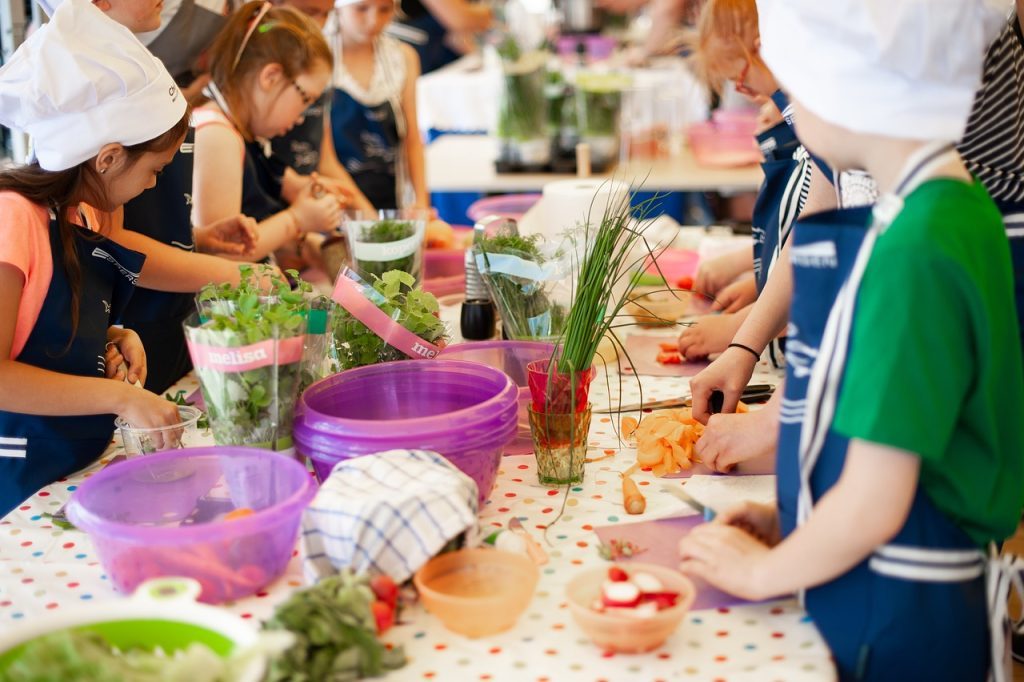
Table of Contents
The gustatory system, or sense of taste, is a remarkable sensory mechanism that enables us to detect and interpret different flavors. It involves specialized sensory cells called taste receptors, which are housed within taste buds located primarily on the tongue, roof of the mouth (palate), and throat. These taste buds contain various taste receptor cells sensitive to distinct tastes.
When we eat or drink, molecules from the food or liquid interact with these taste receptors, triggering signals that are sent to the brain. This neural process allows us to perceive and differentiate flavors. Taste buds do not solely determine taste perception; it is also influenced by other sensory cues such as smell, temperature, and texture. The integration of these sensory inputs enhances our overall experience of taste.
Children are particularly sensitive to taste experiences, as their gustatory system is still developing and adaptable. Early exposure to a diverse range of tastes can shape their taste preferences and food choices in the future.

Why is the Gustatory System Important?
The gustatory system plays a crucial role beyond simply enjoying food. It serves as a protective mechanism by detecting potentially harmful substances; it helps children avoid consuming spoiled food or toxic substances by perceiving unpleasant tastes like bitterness.
It is also closely linked with a child’s overall sensory development and can impact their dietary preferences, eating habits, and nutritional intake. Early experiences with different tastes can influence food acceptance patterns and dietary choices later in life. Moreover, exploring tastes helps children develop a broader palate, essential for a balanced diet and healthy eating habits.
Overview Of The Gustatory System
Here’s a rundown of the gustatory system’s components and how they work:
- Taste Buds and Papillae–Taste buds are sensory receptors located on small bumps called papillae on the tongue, roof of the mouth, and back of the throat.
- Five Basic Tastes–The primary taste sensations include sweet, sour, salty, bitter, and umami (savory), each detected by specific receptors on taste cells.
- Sweet–Detected by receptors sensitive to sugars and carbohydrates.
- Sour–Detected by receptors sensitive to acids.
- Salty–Detected by receptors sensitive to sodium ions.
- Bitter–Detected by receptors sensitive to alkaloids and other compounds.
- Umami–Detected by receptors sensitive to amino acids, particularly glutamate.
- Taste Signal Transmission–When food or liquid enters the mouth, molecules stimulate taste receptors, sending signals through nerve fibers to the brainstem and higher brain regions for taste perception.
- Integration with Smell and Texture–Taste perception is influenced by the sense of smell ( olfaction) and food texture. Aroma contributes significantly to flavor perception, while texture affects food experience in the mouth.
- Development of Taste Preferences–Children’s taste preferences evolve through exposure to various flavors during infancy and childhood, influencing dietary choices and willingness to try new foods later in life.

Supporting the Gustatory System’s Development
We can support the gustatory system’s wiring in numerous ways. Here are some practical suggestions:
- Introduce Variety—Encourage early exposure to a diverse range of tastes. Offer a mix of sweet fruits, sour yogurt, bitter greens, and savory dishes. Celebrate the discovery of new flavors and textures.
- Engage Multiple Senses–Remember that taste is intertwined with smell, texture, and even visual appearance. Create multisensory experiences by involving scents, colors, and different food textures in activities like cooking, tasting, and sensory play.
- Encourage Exploration–Allow children to interact with food in a playful and exploratory manner. Provide opportunities for hands-on experiences like planting herbs, picking fruits, or participating in simple cooking tasks.
- Respect Individual Preferences–Acknowledge that taste preferences vary among children. Avoid forcing foods; instead, gently encourage trying new things without pressure. Foster a positive environment around mealtimes.
- Model Healthy Eating Habits: Children often mimic adults. Be a positive role model by demonstrating healthy eating behaviors and a willingness to try new foods.

Gustatory System Wrap-Up
Nurturing the gustatory system during early childhood is a valuable investment in a child’s overall sensory development and well-being. Celebrate the joys of tasting, exploring, and savoring the world of flavors.
Related Posts
Find more information about the 8 sensory systems at these links:
- 8 Sensory Systems That Drive Playful Learning
- Supporting School Readiness With Sensory Integration
- Sensory Play
- Sensory Integration
Contribute content to Playvolution HQ
Brought to you by Explorations Early Learning
Thoughts On This Entry?
I’d love to hear your thoughts on improving this entry and suggestions for additional glossary additions in the comments below. You can also contact me with comments or concerns.
Browse Trainings
Post Author
Jeff Johnson is an early learning trainer, podcaster, and author who founded Explorations Early Learning, Playvolution HQ, and Play Haven.



Leave a Reply